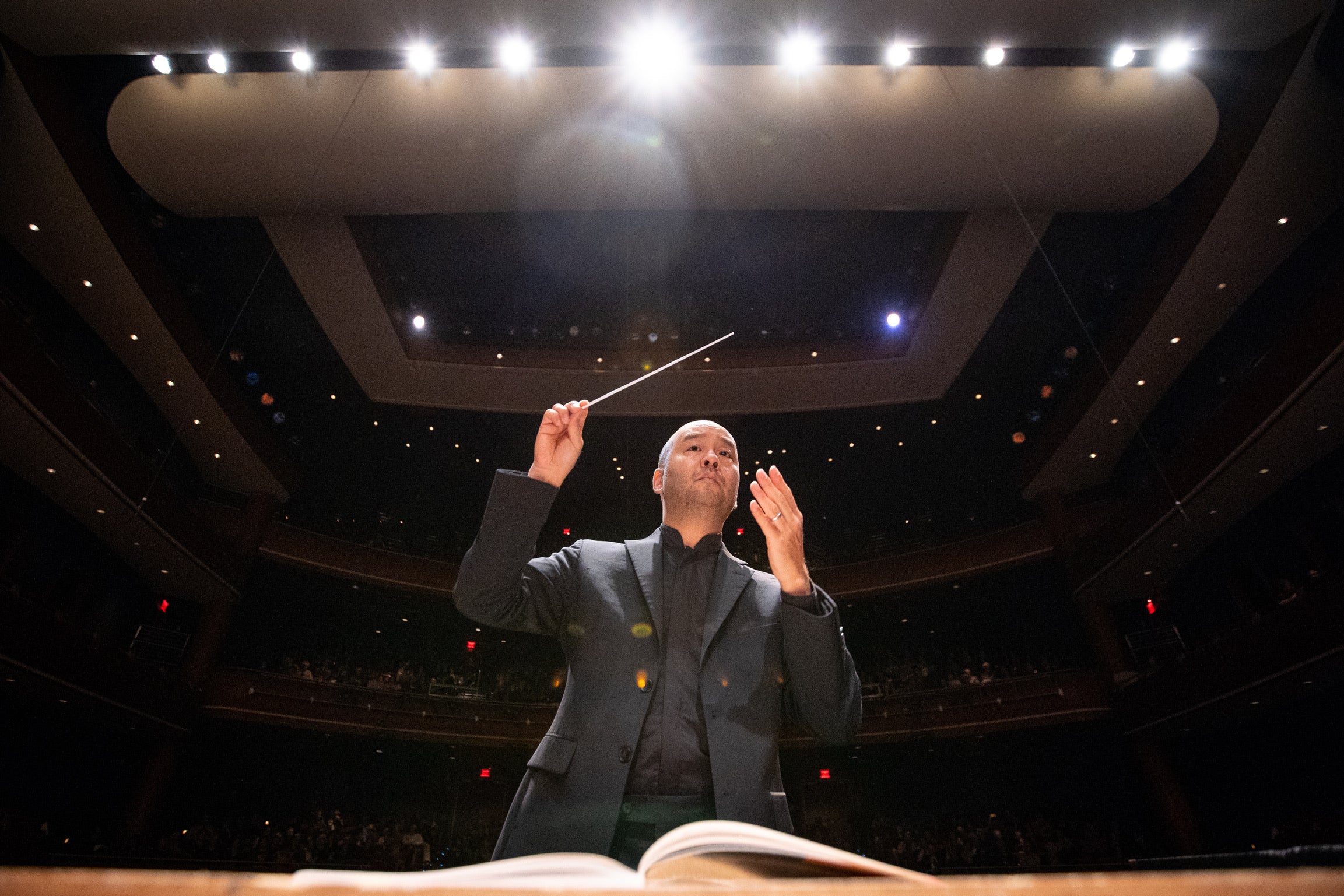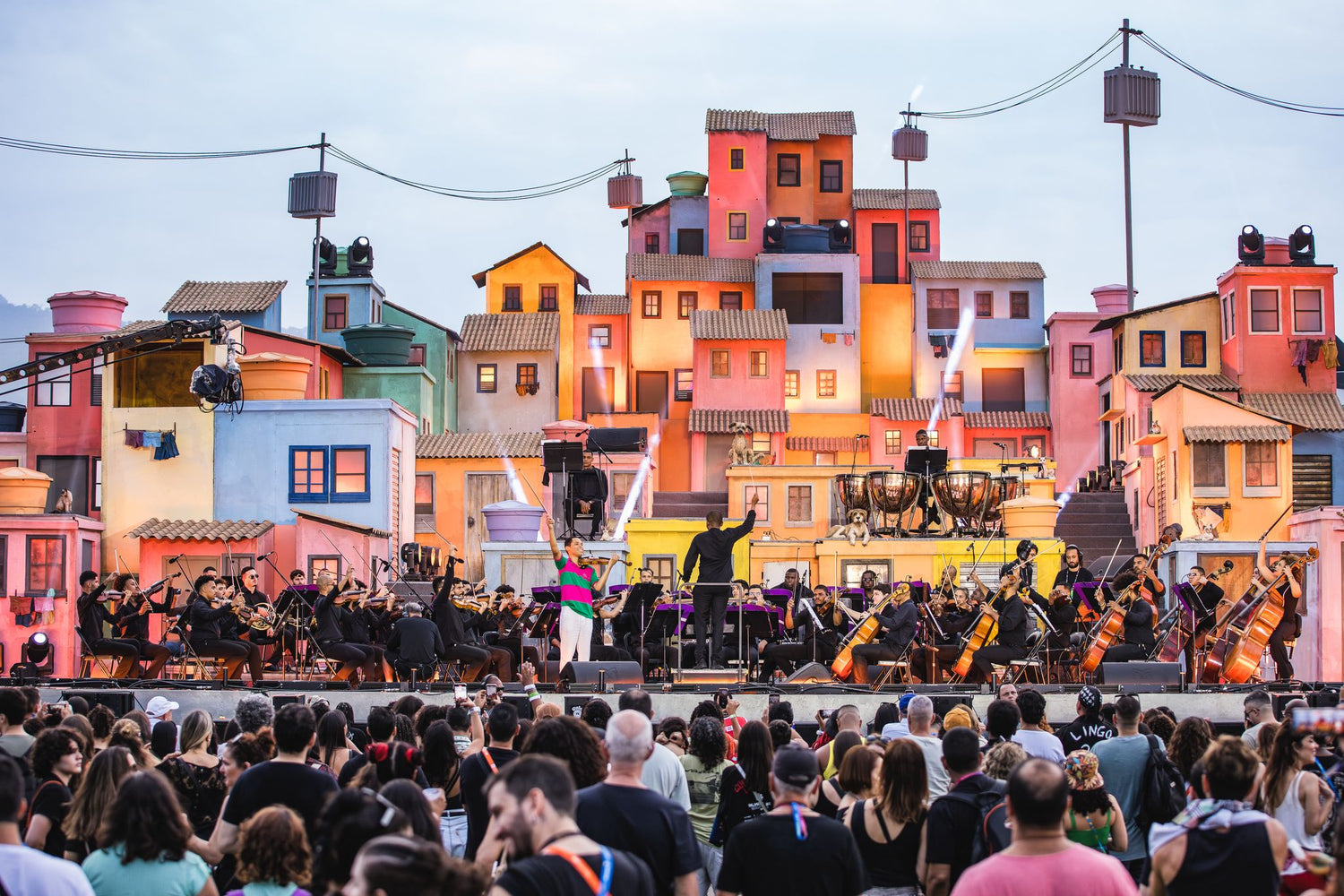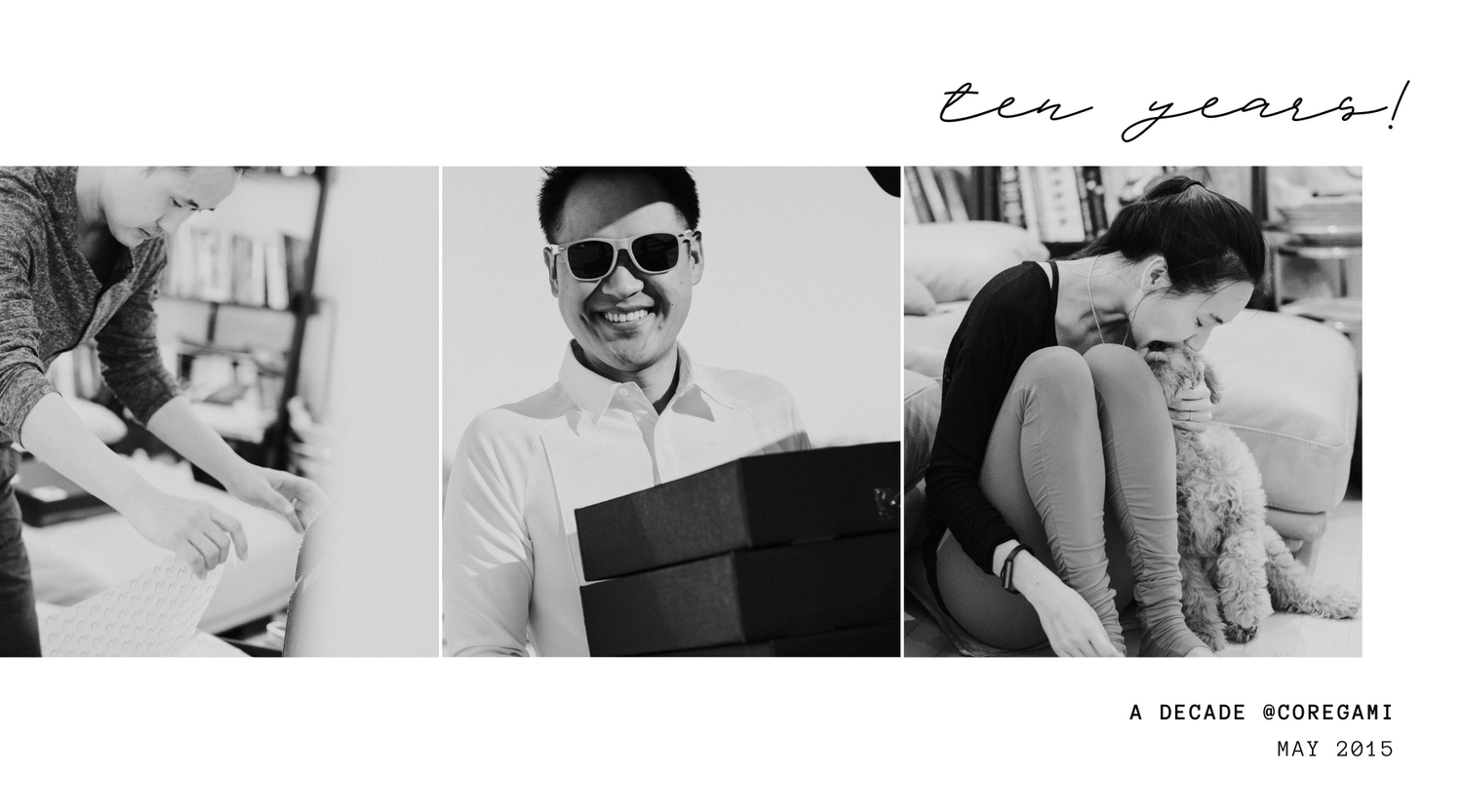A classical concert isn’t quite like a rock concert, where fans are on their feet, crowd surfing, cheering, and moshing. But for conductor Lawrence “Larry” Loh, gauging the audience’s excitement is just as important as it would be if he was playing lead guitar for AC/DC or Led Zeppelin.
Connecting with an audience may be a bit more subdued and nuanced. But it's just as crucial.
At first glance, it might seem that a conductor like Loh has little interaction with the audience during a performance. For one, he isn’t even looking at them. His back is turned, facing his orchestra. But Loh still feels the presence of the audience throughout a performance, and it's an important component of conducting. “Different concerts have different points where we check in with audience applause,” he said. For example, Loh is an avid Star Wars fan, and recently performed John Williams’ music with the Detroit Symphony. “Right when I walked out, the audience went crazy. They were so ready to hear this concert and hadn’t even heard a note. So we knew from the beginning the audience was ready to go.”
“When I introduced the second piece, Princess Leia’s theme, I could tell they were following along with my introduction the whole time. We were all kind of nerds together,” he said. “All these Star Wars people were just reveling in the characters and the music. We encored with the Imperial March, Darth Vader’s theme, and when we hit the first note they just erupted in cheers.”

Conduit to the Crowd
But particularly during a concert where Loh and his orchestra are performing a longer work, then there’s often little or no audience input during the show. “We just get to the end, and we get a glimpse of what the audience felt in their applause. But that’s extremely gratifying in its own way,” Loh said. He knows, of course, that the audience is listening to any performance he conducts, but as he’s conducting, he has to be in tune with the overall aura in the hall, relying on his gut instead of his traditional senses. “I have to use the feeling in the hall, the quietness, the lack of distraction… I can’t see anything.”
Hearing Loh speak about the art of conducting is almost like hearing someone talk about translating languages. “I see my job as a conduit between the musicians and the audience,” he said. That’s because perhaps above all else, he believes conducting an orchestra is less about performing good music than it is about fostering a symbiotic relationship with the audience. “We want to speak to the audience, and have a single voice when we do so.”
He’s adamant that there could be no successful concert without feeling some connection to the audience, even if the music itself was flawless. “Perfection, of course, is an unattainable goal,” he admitted. “But one of the things that makes live performances great is that element, trying to strive for as close to perfect as we can get. Beyond that, what we want in a performance is a human element—the audience bringing their own individual lives to the performance, the musicians doing the same, and those lives combining with the music to make a singular, artistic event that will never be replicated. That’s why people go to live concerts.”
So, the conductor is a conduit to the audience, so that they can experience the orchestra, but in some ways, Loh said he uses his musicians as a conduit as well. “It isn’t quite that I need to see the audience, or that the orchestra watches the audience and I watch the orchestra. We are all just feeling the audience’s presence.” By being in touch with his musicians, he can often sense an audience’s mood as well.
“It’s this beautiful, symbiotic relationship. And it’s one-of-a-kind with every performance.”

Turning Weeks into Seconds
Just like a professional musician might play different styles of music throughout their career (or throughout a given season), Loh said that one of the most invigorating aspects of a career as a conductor is the diverse, shifting nature of the work. “I work with many different orchestras every year, each one has a different personality, and managing that leadership position with those shifting dynamics is one of the most exciting and challenging aspects of my career.”
Though he’s conducted for nearly 25 years, he’s managed to avoid pigeonholing himself in a niche genre or style, still conducting an extremely wide repertoire of both classical and pops concerts today. “For example, I’ll do a Mahler symphony with Symphoria one week, and then conduct the music of Star Wars with Detroit Symphony the next,” he said.
In a certain sense, Loh said conducting is a lot like managing a business, or perhaps professional sports team. He noted that sometimes orchestras will even invite business leaders to watch their orchestra work together, to learn how people perform and work in unison on stage. “Because how a section plays together all depends on the leadership of that section, and how the section does is directly influenced by the leadership of the conductor… when business leaders watch performances it can give them an idea of how great results can arrive out of this collaboration.”
While music is happening live, on stage, all in a signal fluid instant, the office setting is much more expanded, with projects taking place over hours, days, weeks, and even months, and involving dozens of meetings, sometimes. Because of this, Loh said a musical performance is almost like taking a sped-up look at the workings of a business.
“On stage, we’re doing it all at the same time. It’s happening in real time, the result is emerging at once by all the synapses of these people working together, seeing each other, hearing each other. All of the suggestions and changes and meetings you might find in an office are happening instantaneously during a performance.”
 Turning weeks into seconds with the Detroit Symphony. Credit: Detroit Symphony Orchestra
Turning weeks into seconds with the Detroit Symphony. Credit: Detroit Symphony Orchestra
A Classical Music Cooperative
As the music director of Symphoria, a 501(c)(3) nonprofit and one of the only musician-led cooperative orchestras in the United States, Loh’s career is far from ordinary, and the music he conducts is as diverse as it comes. But his passion stretches beyond the sounds themselves, and into the silence between the notes.
“Really early in my career, I remember starting a concert with a piece that had all this silence,” he said. “It’s a piece by [Franz] Liszt called ‘Les Preludes.’ In the beginning, there are these long stretches of silence, and we began and this baby just started crying. I thought it was going to stop, but it just got louder, and louder… and louder.” After about 30 seconds the child stopped crying, and was carried out of the hall. “It wasn’t a big deal at all,” he said, “and obviously we were happy there were young people at the performance,” he added, with a laugh. But even though the baby’s crying hadn't interrupted any notes, Loh told the audience that he’d start the performance over again. “The silence is a huge part of the music,” he said. “The time between the notes is just as important as the notes, and to sit through that silence is a part of that experience.”
Prior to his stint directing Symphoria, which began in 2015, Loh conducted with myriad orchestras across the country, including the Pittsburgh Symphony, Northeastern Pennsylvania Philharmonic, West Virginia Symphony Orchestra, Pittsburgh Youth Symphony, Dallas Symphony, Syracuse Opera, and the Colorado Symphony, in addition to guest conducting around the world.
“I started using Coregami right when I heard about your apparel,” he said, “because there’s such a need for that. Just the amount of movement we do on the stage… Of course, all musicians need to be able to move freely, but it’s just as—if not more—physical to conduct,” Loh said. “Now Coregami is all I wear for any performance.”
In his decades-long career (beginning after earning a graduate degree from Yale in ‘98) Loh says he’s never had the privilege of working somewhere quite as special as Symphoria. The nonprofit was formed after the Syracuse Symphony Orchestra went bankrupt.
“But the musicians didn’t want the music to stop,” said Loh. So in 2012, the defunct orchestra's musicians formed a new group, Symphoria—founded and run entirely by musicians. “[The musicians] were involved with the decision-making in every area, from programming to marketing to scheduling,” Loh said.
It began with just a couple of concerts and quickly grew to a full-time orchestra. As a music director, Loh naturally works with his musicians closely in programming, regardless of where he conducts, but although Symphoria “hired me to be their music director and give them artistic direction, they maintain a really exciting collaborative spirit of planning,” he said. “We all plan the season together. What we get in the end are really interesting programs that aren’t all from the same person. So we have a true sense of ownership of the season and the musicians have a much bigger say—and stake—in the orchestra’s success.”
While at first glance it may seem like Symphoria is a “by musicians, for musicians” system, Loh said this isn’t actually correct. In reality, although the musicians may helm the programming, they still perform, first and foremost, for the community. “We aren’t playing for ourselves. Symphoria is “by musicians, for the community,” Loh said.
Loh said he doesn’t believe this cooperative, nonprofit model is necessarily better than the way things are run traditionally at other orchestras, including those he’s conducted in the past.
“But the model really works for us,” he said, “in this particular situation, and it’s a really exciting way to do things, in part because it keeps the musicians invested and interested in all aspects of the orchestra, not just performing their instrument.”

Credit: Detroit Symphony Orchestra





